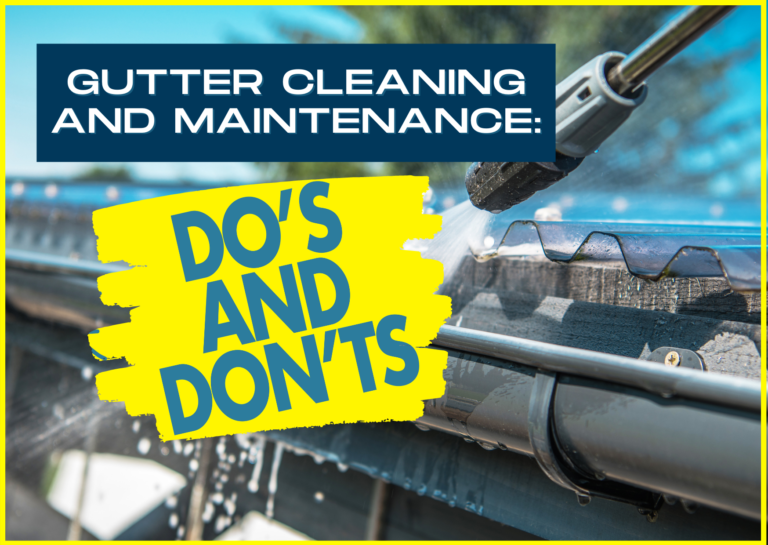Rainwater is another source of water for domestic or industrial use that has been often neglected or forgotten and has been put to waste. Although rain does not pour so often in states with dry climates, this means no to less opportunity to collect rainwater. But when it does, it should be collected for immediate or future use depending on how you will harvest rainwater or on your intended use for it. The wide disparity of the climates and rainfall in the United States is probably why regulating rainwater harvesting is viewed differently by each state. No state, city, or county has the same laws when it comes to rainwater harvesting.
The federal government has not issued any bill or law concerning the regulation of the act of collecting rainwater, whether passive or active. Rainwater harvesting regulation is left solely to each local state government. This is primarily the reason why there are no uniform laws across states regarding this matter. It is illegal to harvest rainwater in a few states where regulations and restrictions apply. Most others, however, have not issued any laws regulating it. It’s not that they are silent on this matter, but they see no need to implement a law to regulate the activity or encourage rainwater harvesting in some other form.
In Arkansas, the average annual rainfall depends on which part of the state you are in but overall ranges from 40 to 60 inches. That’s equivalent to thousands of gallons of water that can be put to use by residents in the state if harvested properly. The harvesting process should also be coupled with proper water conservation to ensure that the real and long-term goal is met. It rains more in the southeast portion, where the Ozark and Ouachita Mountains are located. These areas are wetter compared to the rest of the state. If you live in the north, you experience the most rainfall during spring in May. The south, on the other hand, experiences them during winter. Floods occur in the state because, aside from the melting of the snow, it is situated in the Tornado Alley. This does not mean, however, that drought does not occur in the state. Some portions experience drier weather for long periods compared to other wetter areas of the state.
With a population of 3,039,000, the state of Arkansas still has no specific regulation or technical information that focuses solely on rainwater harvesting. However, in the 2014 Arkansas Code enacted by the General Assembly, there is a single provision there that expressly allows the harvesting of rainwater subject to minor restrictions. Item (g) of the said Code states that rainwater harvesting systems are allowed for non-potable/non-drinking uses if and only if the following requirements are met:
- a licensed professional engineer in Arkansas designed the system
- cross-connection safeguards appropriate for the system are integrated therein
- the Arkansas Plumbing Code is duly complied with
The laws that govern these three requirements intertwine and apply to each other. A licensed professional engineer would know the technical requirements of cross-connection safeguards related to rainwater harvesting systems and would be very knowledgeable of the Arkansas Plumbing Code, considering that they are licensed in Arkansas. The Arkansas Plumbing Code has set forth provisions stating the required standards and materials to install cross-connection safeguards in the rainwater harvesting system. One requirement would always require the other two, and vice versa.
A professional engineer licensed in Arkansas shall design the rainwater harvesting system.
Why is there a need to engage a professional licensed engineer‘s services when designing and constructing a rainwater harvesting system? Water systems engineers will not only provide you with the design you need but also see it to its end of construction and even its maintenance. They design the system with efficiency and safety in mind for the client. You can be sure that the second requirement of cross-connections safeguards would be integrated into the design. Safeguards and durable materials will be used for the installation.
You can also be sure that your engineer, being licensed, is knowledgeable of the technical terms and requirements indicated in the Arkansas Plumbing Code, which is the third requirement set forth by the state of Arkansas. They are also up to date with the latest innovation regarding design because they must take Continuing Professional Competency (CPC) courses that cover the technical, managerial, and ethical aspects of engineering. They have to complete 30 hours of these courses depending on what number their licenses end. Those with odd-ending licenses shall take CPC courses on odd years, while those with even-ending licenses shall take them on even years.
The Arkansas government has provided a directory of licensed professional engineers where you can look up and check your engineer’s license if he or she has complied with the CPC.
It must have cross-connection safeguards that are suitable and appropriate for the rainwater harvesting system to be installed.
In Arkansas, there is a program called the Cross-Connection Control Program. The primary goal is to protect the public water distribution line and system from being contaminated by non-potable water and other foreign matter due to other pipes and lines that might cross the water system. It is based on the Rules and Regulations Pertaining to Public Water Systems (RRPPWS), signed by the State of Arkansas government and implemented by the State Board of Health secretary.
Section 608.6 of the Arkansas Plumbing Code focuses on cross-connection control. The general rule is that cross-connections are prohibited unless they are installed with approved protective safeguards or devices. Cross-connections between the public potable water supply and privately-owned water supply is strictly prohibited.
Furthermore, piping and connections for potable and non-potable water supply shall be properly identified by metal tags or different colors. The markings should be consistent and shall be placed every 25 feet of the pipe. There should also be an arrow that would indicate which direction the water flows in the pipes. If some hazardous elements or pipes may contain contaminants, these should also be properly identified and labeled.
The importance of cross-connection safeguards compatible and appropriate with the installed rainwater harvesting system is that it could interfere with the municipal water line or with other water sources like groundwater or shared well. Since rainwater is intended for non-potable use, it can be considered a contaminant once it leaks to the source or potable water line. A swivel or jumper connection can be installed to serve as a cross-connection safeguard.
Contaminations can be caused by backflow due to a change in pressure in the water pipes and are most likely to happen if there are no cross-connection safeguards. Backflow can either be by backsiphonage or backpressure. Backsiphonage occurs when a vacuum in the water system draws back the water in the pipes, which may be caused by damages in the pipes or water line breaks. On the other hand, backpressure happens when the potable water supply system’s pressure is weaker than that of the downstream pressure, most likely caused by too much elevation in the plumbing.
Backflow can also be categorized by its hazard level, whether high, medium, or low. It is considered a high hazard when it is detrimental to human health. A reduced-pressure-zone backflow preventer can effectively control this type of hazard. A medium hazard is when the backflow is not harmful to human health but is still considered objectionable and controlled by a double check valve. Lastly, the low hazard or when there is no possibility of backflow or backpressure at all.
Your licensed professional engineer can choose among these types and methods of backflow prevention and control:
- vacuum breaker
This type is where a check valve is installed and when it detects that the flow is not normal, it automatically seals the entry of the water supply, and an air vents then opens. It can either be a hose connection vacuum breaker, pipe-applied atmospheric-type vacuum breaker, pressure vacuum breaker assembly, or spillproof vacuum breaker. It is applicable for both high and low hazards, but it has limited applicability to backpressure. In all instances of backsiphonage, a vacuum breaker would be effective.
- air gaps
This is when the potable system is separated from the non-potable system by a vertical separation. For this type to effectively prevent backflow, its size should be twice the supply pipe’s diameter but shouldn’t be less than one inch. The Foundation for Cross-Connection Control and Hydraulic Research (FCCCHR) has rated air gaps as the only method to control and protect water systems against all kinds of hazard levels and even lethal hazards. The applicable standards for air gaps are ASME A112.1.2 and ASME A112.1.3.
- double-check valves
If the concern is for low and medium non-health hazards only, double check valves are the right installments to use, according to the American Backflow Prevention Association (ABPA). Two watertight check valves are placed together with a closing gate valve at both ends. It works for both backsiphonage and backpressure. The applicable standards are ASSE 1024 and CSA B64.6.
- barometric loops
A barometric loop is another method that is only effective in backsiphonage and for a high or low degree of hazard. It is a 35-feet high “U” shaped device that allows water to flow over and should be placed before the connection point.
- reduced-pressure-zone backflow preventers
This method involves the installation of two spring-check valves. These two are separated by a pressure-relief valve that allows the system’s pressure to be released in the air. This type of control is compatible in areas of the pipe where pressure conditions are continuous. The ABPA stated that this method works for both types of backflow and in both health and non-health hazards. The applicable standards for reduced-pressure principle backflow are ASSE 1013, AWWA C511, CSA B64.4, and CSA B64.4.1.
Except for air gaps, these types and methods need to be checked regularly to see if they are still working properly and avoid contaminations over time. In Table 608.1 of the Arkansas Plumbing Code, you will see the applicable standards of backflow preventers for every degree of hazard as well as their applicability to backsiphonage, backpressure, or both.
Penalties for non-compliance are subject to each city’s ordinance, which could include a fine or termination of water service or both. However, some establishments cannot be subject to water supply termination, such as hospitals, dental clinics, and nursing homes.
The Arkansas Plumbing Code must be duly complied with.
Generally, the Plumbing Code requires the certification of the pipes, fixtures, and other materials used in water system installation must be tested and certified by a third-party and must be imprinted with the manufacturer identification. All plastic pipes, fittings, and products used for installation shall be certified as NSF 14 by the NSF International. The first thing to consider when installing water systems is the strength of the structure and damage prevention.
Under 301.4 of the Code, buildings and developments intended for human occupancy and habitation shall be connected to the municipal supply of potable water. The said connection shall not be connected with other water supply that could cause contamination to the potable water unless there are safeguards in place.
The section concerning the protection of pipes and other components, or Section 305, shall also be followed. They should be protected from corrosion by wrapping them with protective sheathing to allow the pipes to expand or contract without friction. The thickness of the wall should be 0.64 millimeters. The pipes and plumbing system should be further protected from breakage, freezing, strains, and stresses beyond the piping capability.
Pipes that pass through under a footing or a foundation wall shall have a relieving arch or a pipe sleeve that shall thrice the pipes’ size passing through. All joints at the pipes should be watertight with the use of approved flashing materials such as but not limited to aluminum, plastic, copper, lead, or galvanized steel.
Section 608 of the Plumbing Code discusses protecting one’s potable water supply from contamination of non-potable water such as rainwater, other liquids, gases, and foreign matter. Plumbing fixtures must be installed in such a way that backflow could be prevented.
The State Board of Health is the one in charge of regulating the activity and seeing to it that residents and commercial development owners comply with the laws. All State Board members are appointed by the government and are generally comprised of health professionals, mainly in public health, sanitation, communicable diseases, and control of chemical exposures.
It is only right that the agenda on rainwater harvesting is handled by the State Board of Health as it is the agency in charge of ensuring that safe and sanitary standards are observed in the construction of plumbing systems. Rainwater harvesting also affects the health of its residents.
There are also rules and regulations about public water systems and general sanitation that require water plans to the Department of Health. The plan shall include a cover letter, cost estimate, review fee ranging from $50 to $500 equivalent to 1% of the cost, duly stamped engineering drawings and material and construction specifications by a licensed professional engineer, and a copy of the basis of the design or hydraulic calculations. The agency will then review the plan before construction, subject to their approval.
Although there are no incentives or rebates given by the state of Arkansas or by any specific city or county therein, residents and developers still engage in rainwater harvesting because of the benefits it gives. Individuals engage in rainwater harvesting for various reasons. Some collect rainwater for gardening and agriculture use, cleaning, flushing, reducing floodwater in their area, and other environmental reasons. Commercial developments likewise save a lot of money by utilizing their collected rainwater for landscaping and other projects that would require thousands of gallons of water. The state and local government would also benefit from rainwater collection as it would mean less monetary allocation for systems and infrastructures for rainwater and stormwater control and water supply. Rainwater harvesting benefits include:
- Cost-effectiveness. All you need to invest in is the equipment you will use to collect rainwater, which depends on the harvesting method you choose. The water you harvested is free, which you can use however you want, whether for gardening, cleaning, or even for your livestock. Reduce your water line consumption to save money and get rebates.
- Low to no maintenance. A rainwater catchment or collection system is a pretty simple system that every homeowner or developer can very much easily maintain or clean. The materials and tools used for installation are also available and accessible locally. You won’t need to call a plumber every time, nor do you have to source materials elsewhere.
- Makes your home self-sufficient. Generally, rainwater is used only for non-potable purposes, but with proper filtration and rainwater treatment, you can use it for potable purposes unless otherwise restricted by your city or county. That would make your home self-sufficient when it comes to the water supply because you would no longer need to connect with the municipal water line.
- Emergency stock water supply. Primary water sources are starting to deplete, and it is smart to have an emergency source and stock when the water suddenly stops dripping from your faucets. Water is an essential need and should always be within reach.
- Easy to install. If you already have an existing building or structure, installing a rainwater harvesting system is not a problem. It is easy to install and would not require any renovation whatsoever with the original structure. The pipes can be attached to the side of the building, and the storage containers can be placed near it.
Rainwater harvesting can be done actively or passively. Active or complex rainwater harvesting involves installing catchment systems, pipe connections, tanks, or cisterns for storage, and may sometimes include treatment of the collected rainwater. The harvested rainwater can then be allocated for various future purposes like landscaping, watering, livestock use, and even inside the house. Passive or simple rainwater harvesting is when the collected rainwater flows directly or is used immediately for landscaping purposes. It involves directing and slowing down rainwater flow from the catchment to the vicinity’s landscape or yard.
There are different ways of harvesting or collecting rainwater. You can opt for a Do-It-Yourself (DIY) rain collection system or invest in expensive equipment. Simple materials like a barrel can already serve as good storage for rainwater, and a change in the type of plants you use in your garden like xeriscaping can already help you save gallons of water.
For active rainwater harvesting, your licensed professional engineer will include in your system the following:
- a catchment surface, which is usually the roof
- a filtration for any debris from the catchment surface or roof, which will serve as a before storage treatment
- gutters, pipes, and downspout that will let the water flow directly to the storage containers
- cistern tanks, barrels, and other approved containers for storage of the harvested water for future use
- distribution pipes which will bring the harvested rainwater to its final destination and intended use
There are no laws expressly prohibiting the activity of passive rainwater harvesting in the state of Arkansas. You may also opt to integrate active and passive rainwater harvesting systems in your home or development to maximize rainwater collection.


